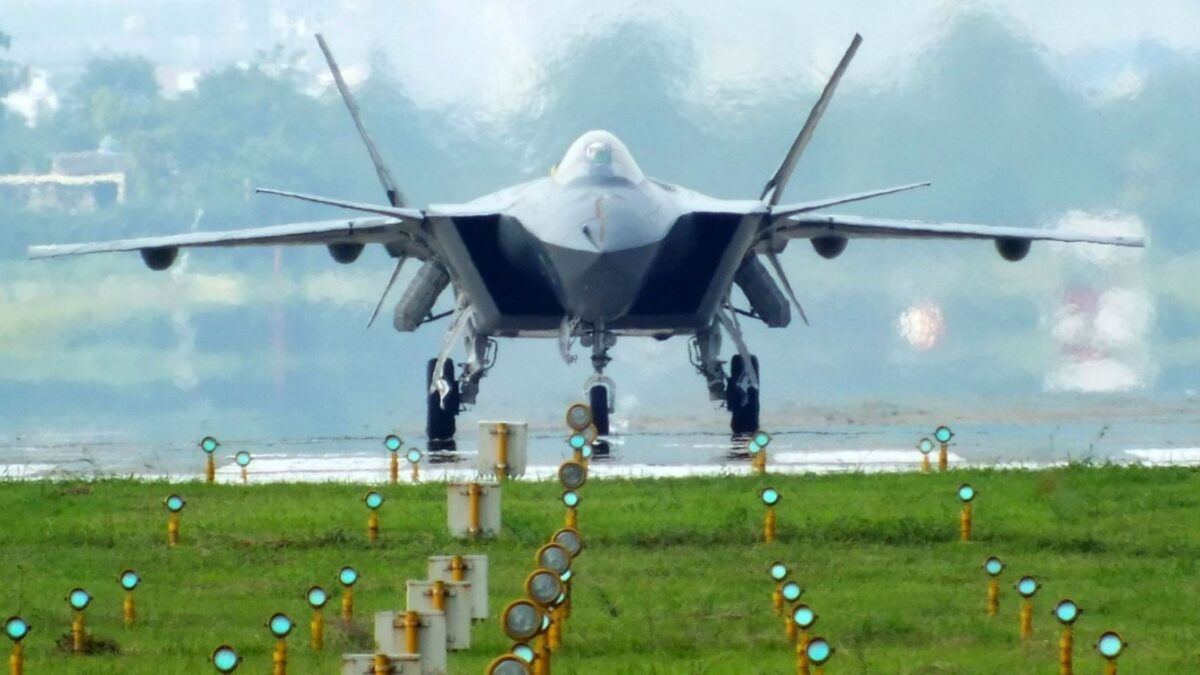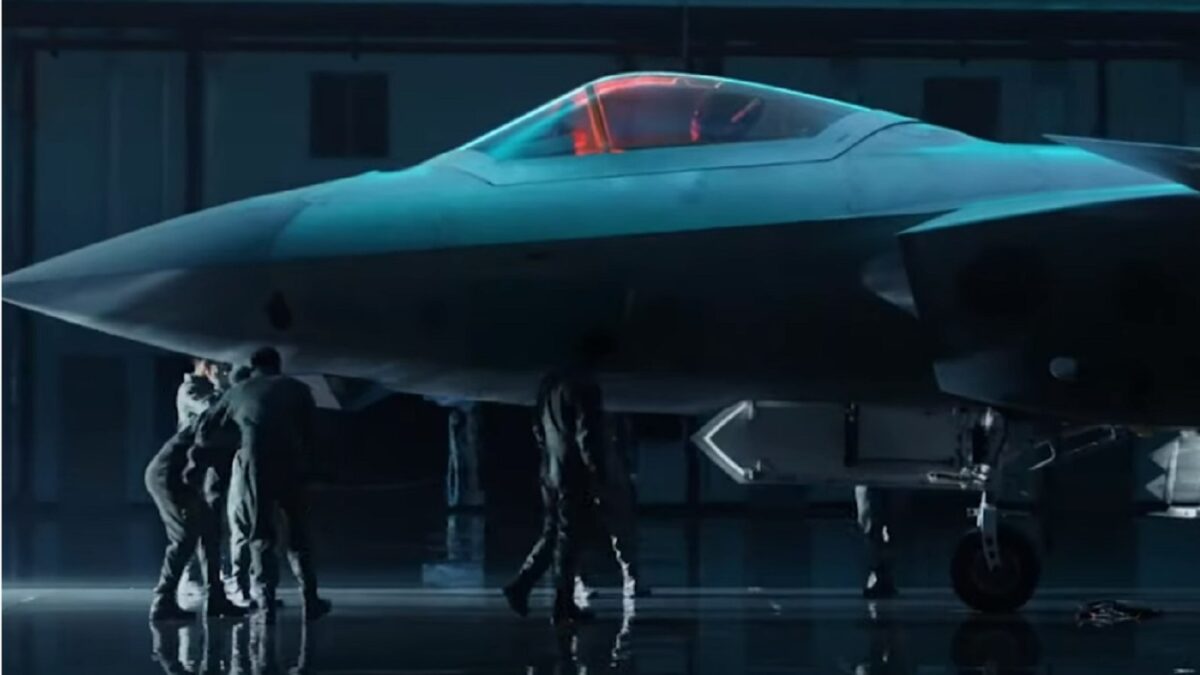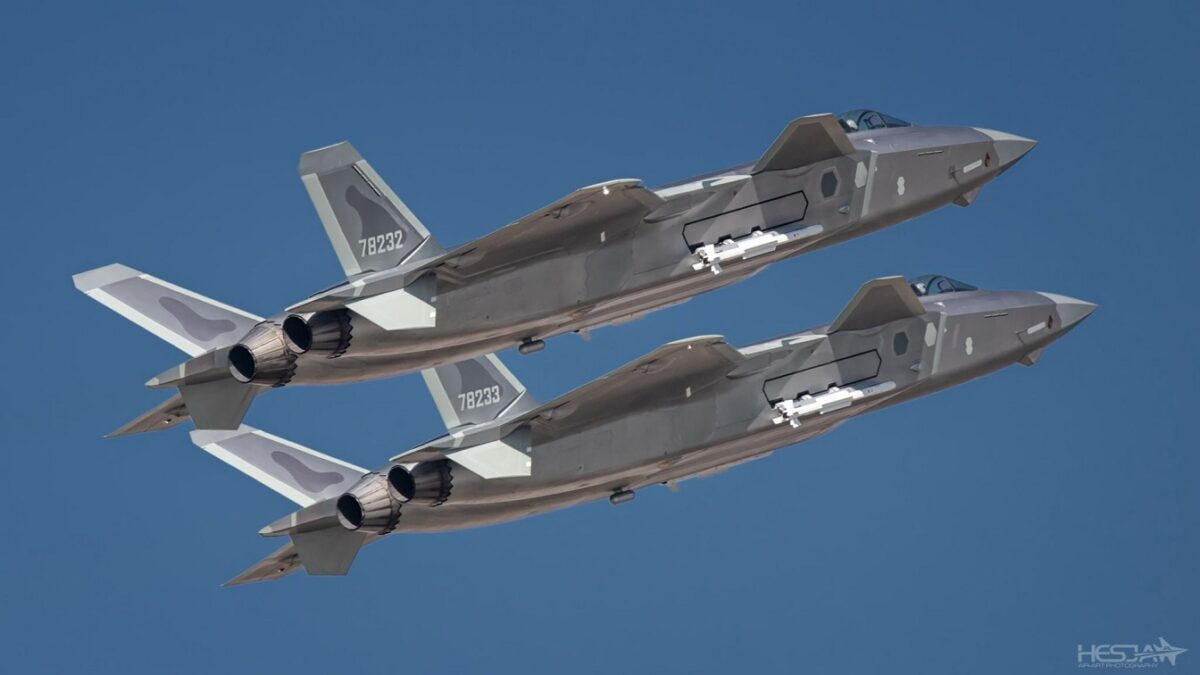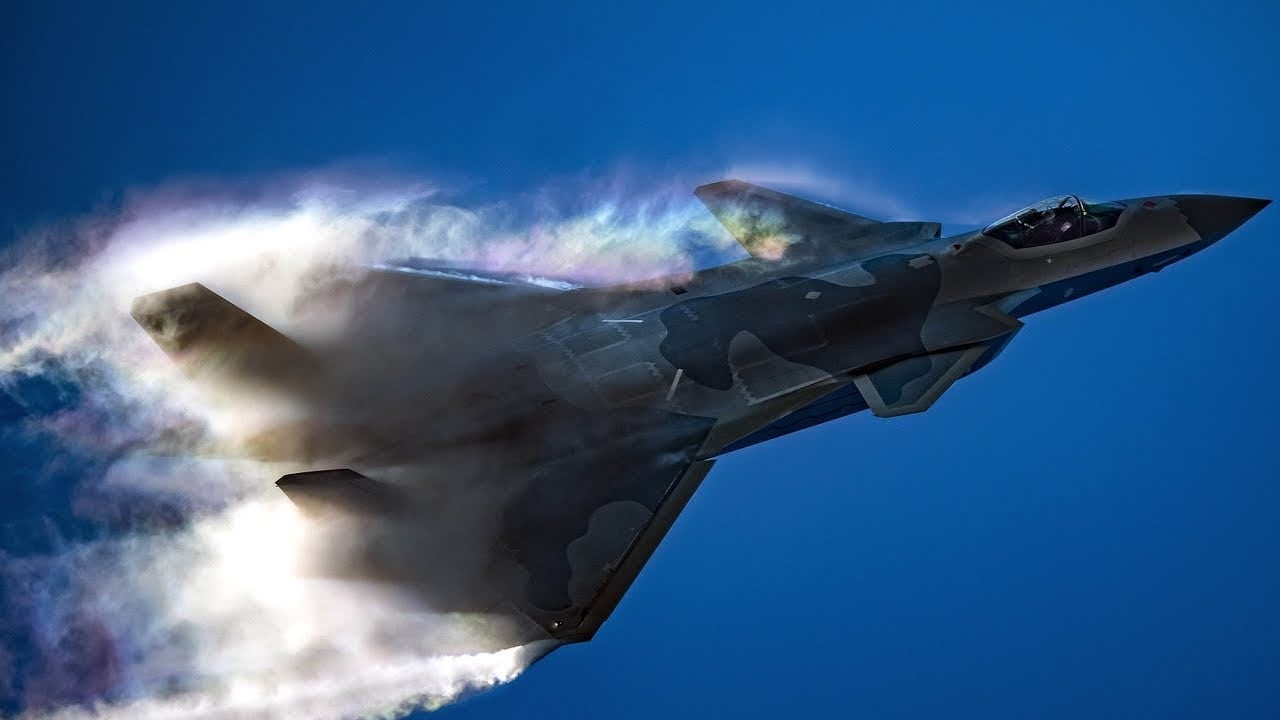China’s J-20 stealth fighter is proliferating beyond expectations—if a report from the Communist Party about its budding deployment is true.
A party honcho said that the J-20 Mighty Dragon is now deployed in all five People’s Liberation Army sectors around the country. A representative from the 20th National Congress of the Communist Party revealed that rosy scenario October 20. This source also believes the J-20 is being constructed in numbers to steadfastly replace older airplanes in China’s fleet.
The J-20 Is Growing in Stature
Chen Liu, a delegate to the party confab from China’s army and police force, said that the J-20 is taking up a bigger strategic role in China’s national security plans, according to state-run broadcaster CCTV. Chen is also a Mighty Dragon pilot so he has firsthand knowledge about how the fighter can perform.
China Can Go Execute Defensive and Offensive Operations in Multiple Areas
China has five theater commands – comprising the eastern, southern, western, northern and central parts of the country. J-20 deployment in these regions is an important development as it gives the People’s Liberation Army Air Force (PLAAF) confidence that a stealth fighter can not only protect the homeland but that it would have the numbers to execute offensive operations in multiple geographical areas. The eastern and southern commands would be the most important to address the Taiwan Strait and East and South China Sea where potential conflict could arise with Taiwan or the United States and its allies. The PLAAF also would have the ability to stymie any incursion by India on the southwestern region of the country. In the northeast part of China, the J-20 can protect against South Korea and Japan.
All Weather Fighter
This also means the PLAAF can fly the J-20 in different weather and environmental conditions such as deserts and coastal regions and in the heat and cooler conditions.
Played a Role in Battle Drills Against Taiwan
The J-20 is a homegrown fighter and the first stealth warplane produced outside of the United States. It can be compared to the American F-22 and F-35. The J-20 was a featured airplane in the PLAAF’s exercises around Taiwan after U.S. Speaker of the House Nancy Pelosi’s visit to the island in August.
J-20 Specs Make It an Air Superiority Fighter
The fifth-generation Dragon is estimated to have a top speed of MACH 2 and a range of 1,100 nautical miles with a ceiling of 66,000 feet. It is believed to carry more weapons and fuel than the F-22. It can fire munitions beyond visual range and in ground attack missions. The J-20 has delta wings with forward canards and is considered an air superiority fighter. It can be refueled in flight to extend its range to take the fight to the enemy.
PLAAF Has Growing Capabilities With the J-20
China has come a long way since the PLAAF flew third-generation fighters and its pilots had limited ability to fly at night and in poor weather. The PLAAF still has no combat experience, but J-20 pilots judging from the interview above, are confident about the Mighty Dragon and its abilities to dominate air space, at least among its neighbors. However, U.S. allies such as Japan, South Korea, Singapore and Australia could field a large force of F-35s that could still challenge the J-20. With aerial refueling, the J-20 could reach downward into the South China Sea to give it greater range when defending China’s territorial claims on various islands, rocks, and reefs in that region.
To be sure, one airplane does not make an air force and China must still show prowess with support aircraft such as command and control and electronic warfare birds. Chinese air superiority is not assured. But the PLAAF continues to improve its capabilities and the Mighty Dragon’s proliferation shows that the Chinese aerospace industry is strong and can pump out new fighters in numbers on a regular basis to cover all the sectors in China’s offensive and defensive plans.
J-20 Pictures

J-20 stealth fighter. Image Credit: Creative Commons.

J-20 Stealth Fighter. YouTube Screenshot.

J-20 Stealth Fighter. Image Credit: Creative Commons.

J-20. Image Credit: Chinese Internet.
Expert Biography: Serving as 1945’s Defense and National Security Editor, Dr. Brent M. Eastwood is the author of Humans, Machines, and Data: Future Trends in Warfare. He is an Emerging Threats expert and former U.S. Army Infantry officer. You can follow him on Twitter @BMEastwood. He holds a Ph.D. in Political Science and Foreign Policy/ International Relations.

